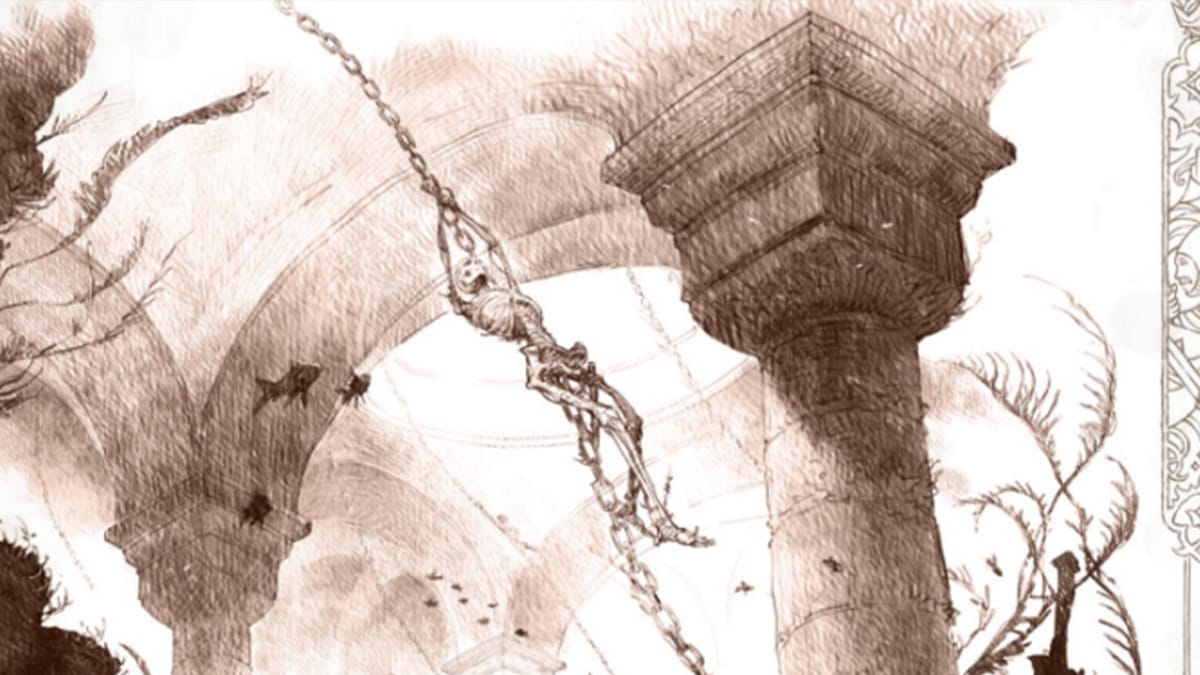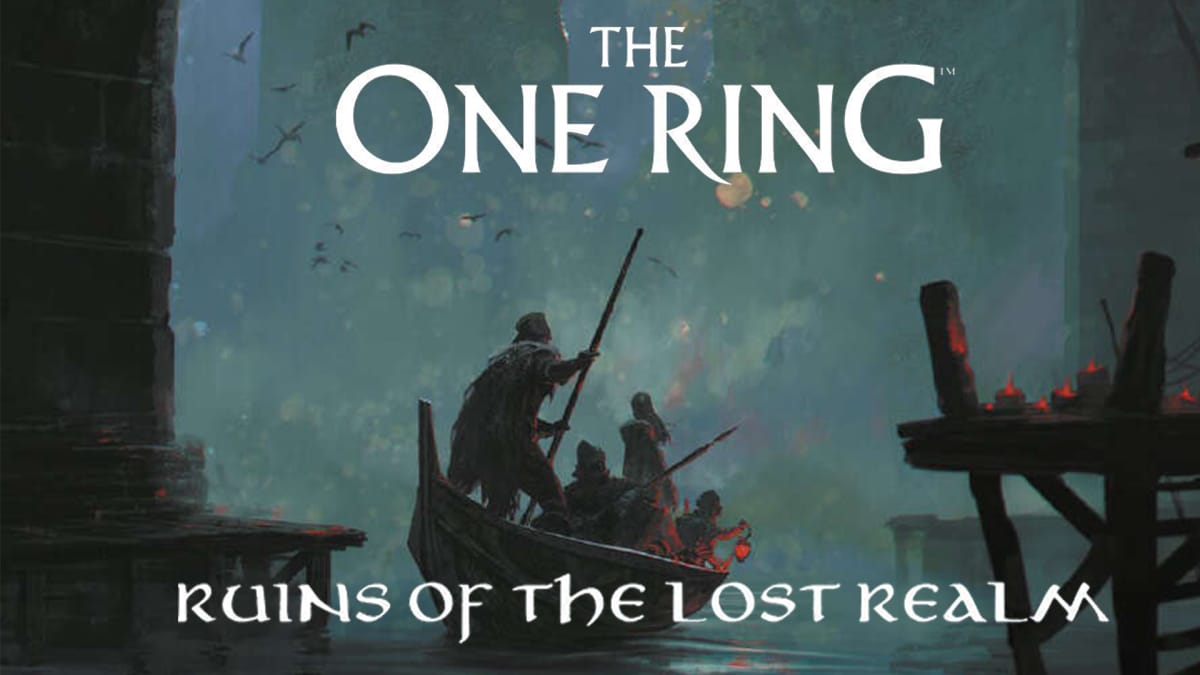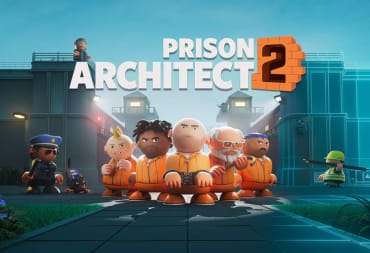Tolkien created an absolutely gargantuan universe when you account for the depth of the lore and history he created. That’s why Ruins of the Lost Realm is a great opportunity to get an in-depth and immersive view into a specific region of that universe. This supplement for The One Ring RPG Second Edition focuses on the lone-lands, the southern region of Eriador to the South and East of Bree/The Shire, an area that hasn’t been extensively explored before in any of Tolkien’s own works. Free League Publishing provided us with a review copy of the supplement, so follow along with us on our journey in the Ruins of the Lost Realm.
What is Ruins of the Lost Realm?

The supplement starts out by taking you through a brief description of the area it focuses on, with particular focus given to Tharbad, a city described at the time of the setting as abandoned and lifeless. Of course, the necessity of making this a playable area for an RPG means that the writers had to play a little fast and loose with the canon. They’ve interpreted the city as being dying, rather than dead, allowing for Loremasters, and the writers, to populate adventures with characters to interact with.
It’s an acceptable twist to the canon, and it gives a bit of flexibility to the adventures you can run with the setting. There’s even extra guidelines for running the more literal interpretation of the location for any Tolkien-purists in the audience. Overall, it’s a great approach to the material, and the writers clearly have a lot of love for the source material, having weaved lots of small literary nods and references to the original books.
Ruins of the Lost Realm - Tonal Differences

The aforementioned point of focus in Ruins of the Lost Realm is quite a dark region, both in its desolation, and in the lives of those that inhabit it. It leads to the places and people you visit being grimy, grim and generally several shades murkier and darker than typically was found in lots of middle-earth. It’s not even relegated to the humans either. Even the dwarves and elves you meet being the descendants of scared or down-trodden kingdoms.
Overall, the tone you find throughout the first descriptive sections of the book that deal with specific locations that could be settings for adventures is darker than usual, but not aggressively so. There’s nothing found in any of the setting suggestions that completely breaks the link to the source material, and to a certain degree it’s interesting to explore the more exclusively dark aspects of Tolkien’s universe, even if ‘Dark Fantasy’ as a label feels antithetical to the original work’s tone.
Ruins of the Lost Realm - Using the Book for Adventures

As well as the first section that details various adventurous locations to use, there is a second section that details narrative points that can be used, and the final section covers 12 new important landmarks to add to those featured in the core rules. You need to combine all 3 to craft a truly perfect adventure in the region, though obviously you can embellish as much as you like, if that doesn’t bother you.
Overall, the selection of material is pretty sizable. It covers great locations dripping with history, albeit a grim history that details the dying centuries of a once great and powerful civilization. The focus, especially in the first section, is on many tiny details and stories about the people and the region. Any one of these elements can be expanded upon to become a central pillar of an adventure, and with the surprisingly wide variety of locales and narrative points, you can easily spin the yarn into an epic campaign delving deep into the ancient history tied to the area.
By far, the strongest narrative hook is The Black Numernoreans, a group of Dunedain who fell to shadow long ago. This section of the book details how the Black Numenoreans have sailed out of Harad in a ship the size of a fortress, attacking up the coasts and rivers of the region, searching for Rivendell. Because these hooks are detailed with timelines of events too, you can focus on any part you want or use the whole thing like an arc of a campaign.
Ruins of the Lost Realm - New Landmarks

The landmark section of Ruins of the Lost Realm is an excellent resource in its own right, especially if you’re electing to stick more closely to Tolkien’s canon of the region and thus ignore the scratches of civilization described in the first two sections. The descriptions of these famous landmarks are presented in the same format as those found in the appendix of the core rules, allowing Loremasters to use them to construct a campaign completely from scratch.
Even better, these sections go into great detail with the background and history of each location, giving plenty of inspiration for how each location can be used. There’s also a decent amount of variety, making it both possible and attractive to take your group on a potted history tour of southern Eriador and its scenic stinking swamps and abandoned civilizations.
One of the landmarks that sticks in your mind is The Old Dwarf-Mines, a long-abandoned dwarven mine along the northern edge of the blue mountains. Beset by rumours of an ancient treasure horde and a fearsome beast, this landmark has a really classic setup for an adventure, complete with monsters and a rich reward. The highlight is the design of the mine itself, which follows a maze-like setup, rather than the underground settlements of places like Moria.
Ruins of the Lost Realm - Final Thoughts

Overall, Ruins of the Lost Realm is an excellent supplement for The One Ring RPG Second Edition if you’re looking for a slightly darker setting or narrative. Of course, the necessity of steering away so sharply from established canon is liable to put a bad taste in the mouth of a lot of players. That said, there wasn’t much to be done. Things needed to be twisted slightly, or they wouldn’t work for the game, and it’s clear that any changes were done with as much love for the source material as is possible in any endeavor like this.
Should I buy Ruins of the Lost Realm?
If you’ve longed to see Tolkien's world go a bit dark, this is your perfect supplement, assuming you’re not a Tolkien purist who wants everything to respect established canon. The amount of content on offer here is astounding, and it’s certainly worth any Loremaster who wants ideas to write their own adventures and campaigns.
Review Summary
Have a tip, or want to point out something we missed? Leave a Comment or e-mail us at tips@techraptor.net













